A museum day in Paris
As said before, we enjoy seeing the sights. This includes spending a rainy afternoon in a Parisian museum, and we like to spread the joy.
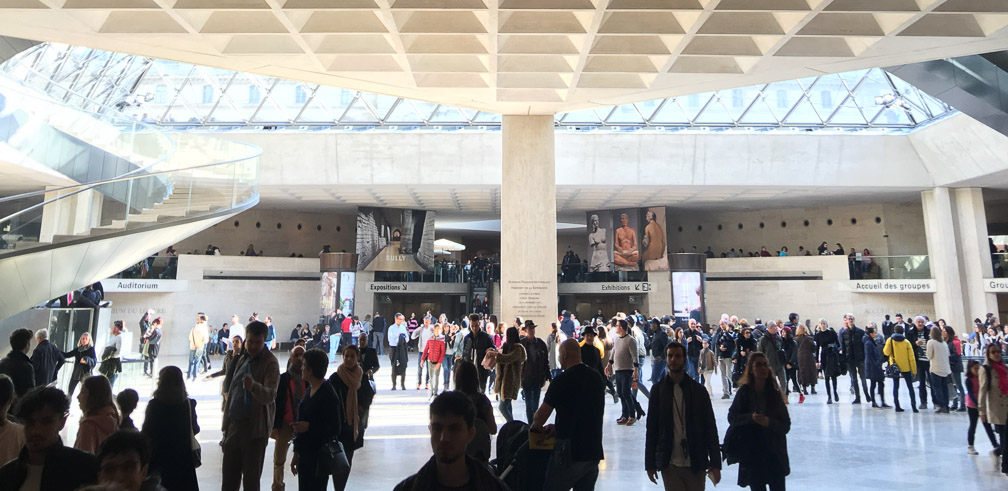
As said before, we enjoy seeing the sights. This includes spending a rainy afternoon in a Parisian museum, and we like to spread the joy.
So many places, so little time…
Paris is full of museums, so we can only list (and visit) a small collection. We include the big ones; they have the biggest collections but also often require a bit of pre-planning.
Most museums are free on the 1st sunday each month. And while this can mean long queues at the popular venues, it’s a great opportunity to visit smaller places for free.
The Louvre
The mother of them all: Housed in a royal palace. Largest, most visited museum in the world. Big names and the most famous piece of art there is. You could literally spend weeks here, so bring time and come prepared.
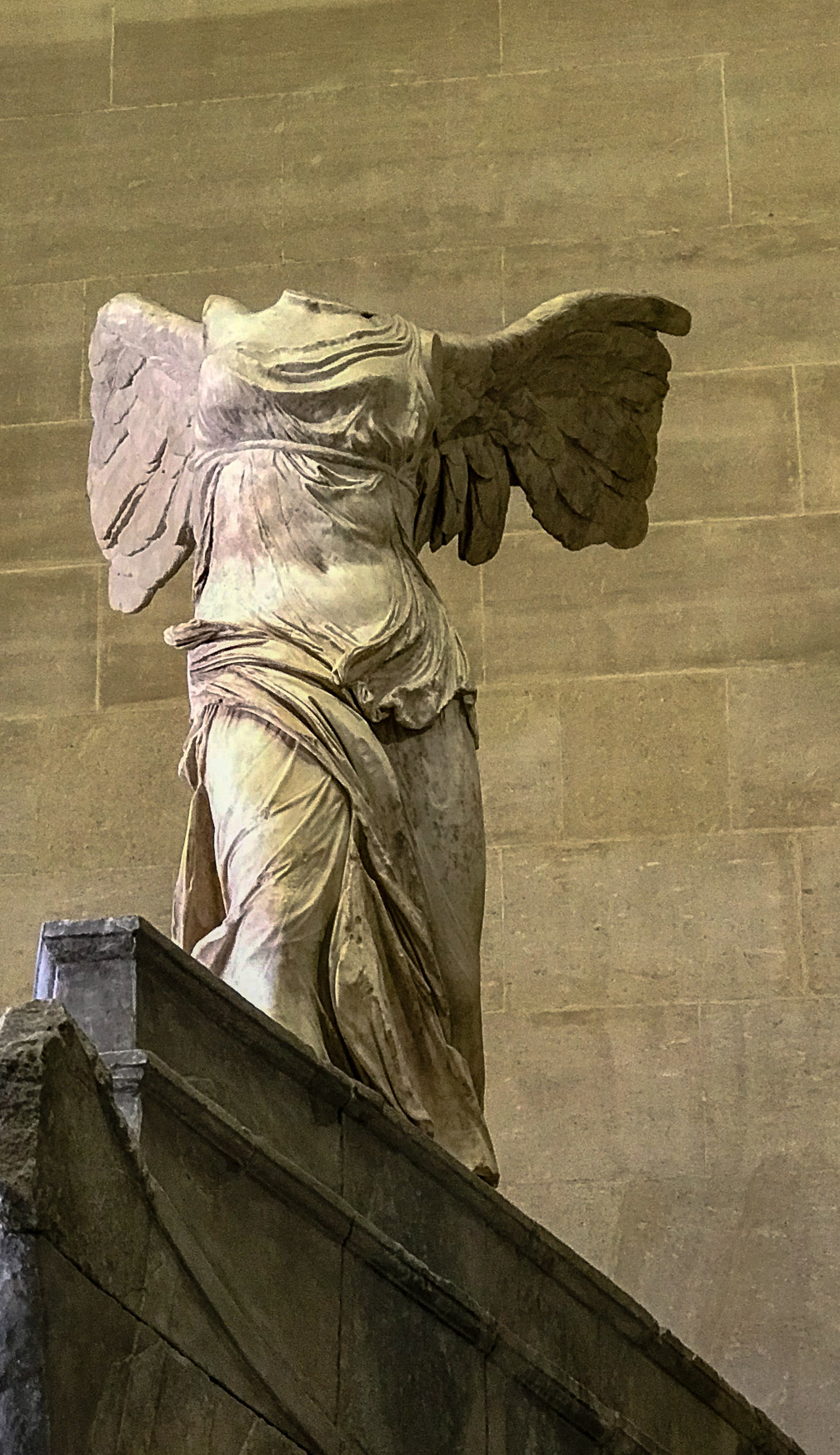 The Louvre. Photo: Ingrid
The Louvre. Photo: Ingrid
Obviously, everyone will head to the Mona Lisa right away. So will you, just to get this one off your bucket list, although the experience is a bit underwhelming: You can’t get close and you’ll be inside a drove of people trying to selfie themselves with the work.
Once you’ve paid that visit, you’re free to roam the giant corridors with (often giantesque) paintings, sculptures and other art, ranging from ancient Egypt up to the French revolution.
Currently (2018) some renovations are going on - while almost the whole collection remains visible, you should check their homepage if you want to know if your favourite thing is visible on the day of your visit.
Practical tip: Even if you don’t have a ticket, avoid the queues at the main entrance at the pyramid, and enter through the Carousel du Louvre underground mall. There are entrances in Rue du Rivoli and on the other side of the Place du Carrousel near the small Arc de Triomphe.
Musée d´Orsay
If you can just make one museum in Paris, make it this one. Converted from a railway station in the 1980s, it houses all the big names from after the French Revolution until Word War I.
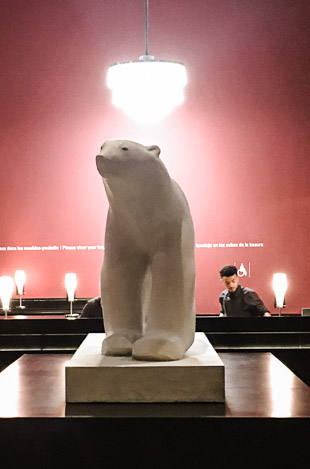 The Polar Bear. Photo: Daniel
The Polar Bear. Photo: Daniel
That time was, arguably, one of the most interesting for art. Much of the work reflects the social change and turmoil at the turn of the centuries: When looking at the impressionist masterpieces, it is easy to forget that the style was once revolutionary and a radical departure from the way art “ought to be” done.
The building itself is also spectacular, with the wide open space of the former station hall and the stark contrast between the historic building and Gae Aulenti’s 1980s interior work.
There are many more galleries outside the main hall, and you can easily spend a whole day here while only scratching the surface.
Practical tip: Lines are always long – the big names are a big draw. Come with a pre-booked ticket and you can enter directly through the side entrance (entrance C) and avoid most of it.
Centre Pompidou
The Centre Georges Pompidou is the museum for contemporary art. Where the Musée d´Orsay reflects the turmoil around the turn of the 20th century, the Centre Pompidou itself is a work from an equally tumultuous time.
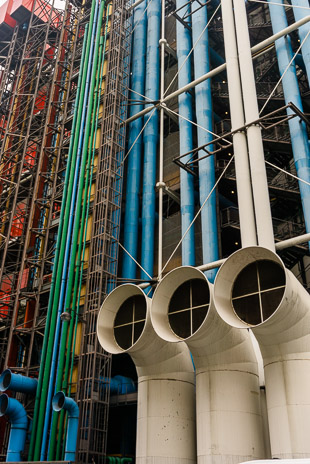 Centre Pompidou. Photo: Daniel
Centre Pompidou. Photo: Daniel
Announced shortly after the 1968 student unrests, the construction was a work of pride for the still-young fifth republic. Renzo Piano, Richard Rogers and Gianfranco Franchini came up with an “inside out” building which, at the time, was derided by many.
It also became instantly popular with the crowds and by now is regarded as a landmark in its own right.
Practical tip: As in all big Paris museums, queues get long, so come with a ticket.
Musée de l’Orangerie
This museum is build around a collection of Monet’s Waterlilies, which are the main exhibition. The rest of the exhibition is also impressionist (or post-impressionist), and at the time of our visit even the special exhibition was Waterlilies-themed.
The museum itself isn’t very large, but the famous work draws a lot of visitors. And unlike in the Louvre, there isn’t a lot of space for the crowd to disperse. Unfortunately this museum also seems to attract the highest number of people who take pictures of the pictures, which can get very distracting in the smallish spaces.
By itself the Waterlilies display is spectacular, even though selfie-posing folks may distract from the experience.
Practical tip: It is worth a visit, but try to come on a weekday to avoid the worst of the crowd and have a bit of breathing room.
Fondation Louis Vuitton
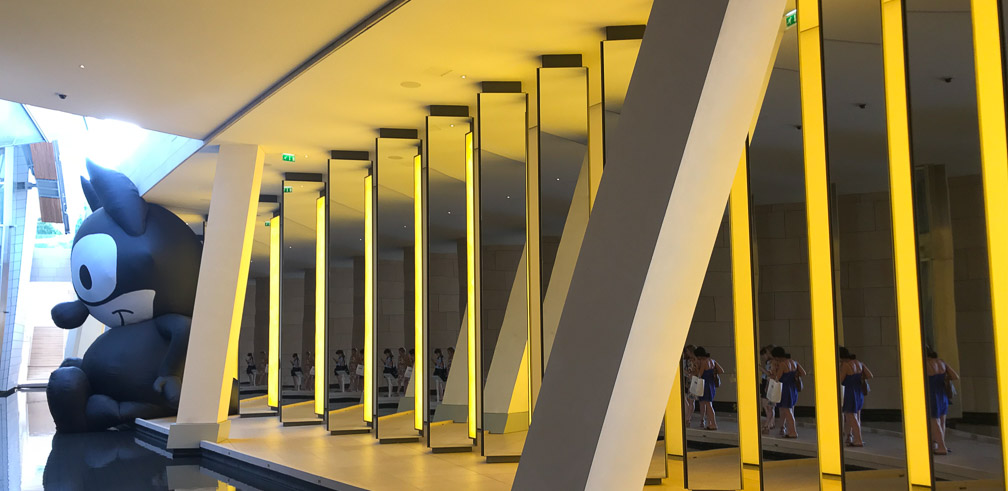 Fondation Louis Vuitton. Photo: Ingrid
Fondation Louis Vuitton. Photo: Ingrid
Sponsored by the luxury brand of the same name, the Fondation Louis Vuitton set up this contemporary art museum in 2014. Frank Gehry’s vaguely boatlike, glass-clad building puts it firmly into the 21st century.
The art is contemporary as well, and the museum does a great job at presenting it. If you go you should take a bit of time to explore the building itself, which is surprisingly large inside and has many nooks and crannies.
The Fondation has become quite successful, and the exhibitions are very popular. The visitor number are managed well, though, and it doesn’t feel very crowded once you’re inside.
If you skip the shuttle buses and take the Metro to Porte Dauphine, you’ll also see one of the three last roofed “Dragonfly” Art Nouveau Metro entrances by Hector Guimard. From there it is a small walk to the museum.
Practical Tip: The museum sells “timed” tickets which allow entrance within a given 30-minute window. The number of tickets per slot is limted, so it’s a good idea to reserve your entrance time in advance. The place itself is a bit out of the way – the surrounding park was still under construction when we visited and other than that there isn’t really much to do.
Musée Cernuschi
This one is right on the gates of Parc Monceau, and we found it more or less by accident. The story of this museum goes like this: Rich guy makes extended trip to Asia. Comes back with a house full of souvenirs. Builds a villa around it, which becomes a museum.
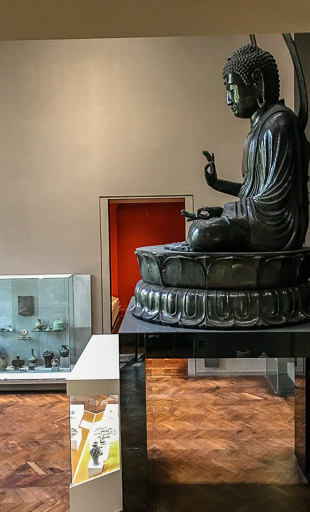 Buddha. Photo: Ingrid
Buddha. Photo: Ingrid
Entrance to the permanent exhibition is free, and there are also frequent special exhibits of Asian art.
The museum is quite small, so you won’t spend the whole day; but you can always take a stroll in Parc Monceau afterwards and wonder how they hauled that giant bronze Buddha to Paris in 1873.
Beating the queues
If you come armed with a valid ticket, you can beat the wait most of the time. And with the Internet, prebooking your visit is easier than ever.
The catch is that while most of the museums accept mobile tickets on your phone, buying them from a museum’s homepage can be surprisingly hard. The process is often confusing and you may end up needing to pick up the ticket somewhere, or print them at home.
The most convenient solution we found is the Tiqets app - you can just buy and download the tickets on your phone. However, check the official price before you buy: The app may only list expensive “premium” tickets, and discounts are not available at all.
The Paris Museum Pass also gives you fast track access to many museums and makes sense if you’re planning to visit at least four or five of the main attractions.
Disabled travelers
If you have any kind of disability, you can just show up and get free entry and fast-track treatment for you and a second person.
You’ll only have to show some official documentation that you’re disabled and you get in, no questions asked. You do not need to be a wheelchair user or have any obvious impairment. The second person doesn’t have to be your assistant, you can take anyone.
Some of the museums also have special services and/or tours for disabled visitors - check the websites.
Under 26? Go for free!
If you’re under 26 and an EU citizen, you’ll also get free entry in many places – but you’ll have to queue for tickets in most places, with the exception of the Louvre.
1st Sunday of the month: Free for all
Most museums are free on the 1st Sunday of each month, which is great for everyone on a budget. But while you don’t have to queue for tickets, everyone still has to get in line at the security checkpoints. No special treatment for anyone there, except for disabled visitors.
Get the newsletter
When you subscribe to the newsletter, we'll keep you up to date on what's new. You can unsubscribe at any time.
Share this page
What do you think?
Let us know what you think - privately or here for all to see. Simply email us or check our imprint and privacy policy for more info and possibilities to get in touch